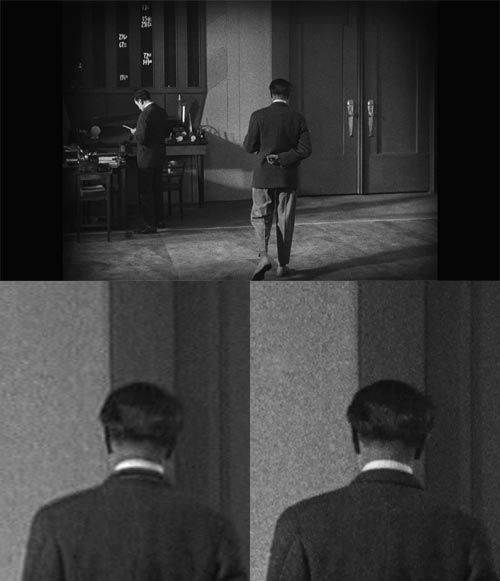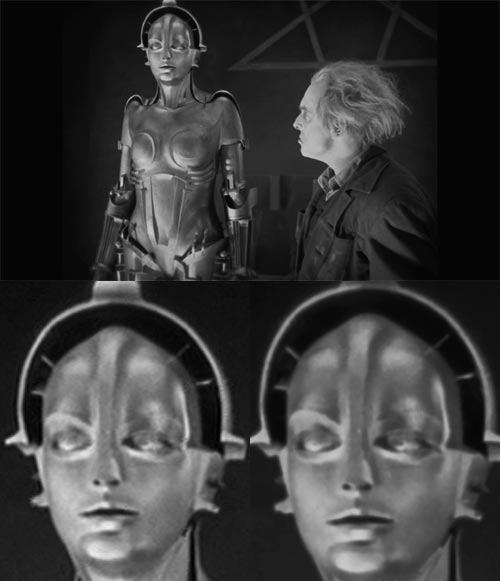 Picture:
Picture:  Sound:
Sound:  Extras:
Extras: 

Download scan of review (JPEG, right click, Save As): Page 1, Page 2
Movie:  Picture:
Picture:  Sound:
Sound:  Extras:
Extras: 
So disastrous was this that the unfortunate film studio which produced it was sold to new owners. The original 153 minute version was chopped up for re-release in various versions around the world.
Over the next few decades the existing copies of the film, already mutilated, degraded further through wear and the sheer passage of time. But while this was happening, interest in what was belatedly recognised as a masterpiece grew anew.
The first version released in Australia on digital media -- back in 1999 -- ran to a seemingly impressive 139 minutes, albeit with a picture quality that was as bad as anything which had ever appeared -- or will ever appear, I suspect -- on DVD. In the mid 2000s, though, a more complete and beautifully restored version was released by Madman Entertainment. This ran to 118 minutes. The reason it was more complete at 118 minutes than the 139 minute version was because the 'longer' one had been processed to run at a slower frame rate. It looks like the film was originally shot at 18 frames per second, so conversion to one of the regular DVD or Blu-ray formats is difficult. That early release went for a conversion so that human movement on the screen was slowed down to something approximately realistic. The more recent version, beautiful though the frames were, ran them at 25fps, leading to those comical movements common in old movies.
That's what this Blu-ray version does too, more or less (it is actually 24fps). Despite that, the run time is up to 150 minutes. This is thanks to the 2008 discovery of a 16mm version of, basically, the full original cut of the movie. Apparently back in 1927 the full movie was sent to Buenos Aires. There it languished on nitrate stock until the 1970s. Unable to conduct a proper restoration, it was transferred to 16mm, scratches, damage and all, before the 35mm original went up in smoke.
All but a couple of minutes were now available, but there was no way the missing segments to be restored from the 16mm version could be brought up to the quality of existing version, which had been taken from relatively early generation material gathered from archives around Europe. So they have done their best.
What you have is most of the movie fairly detailed, with excellent black levels and largely free of noise (although some still makes it through), with interludes of much softer material, also marred by lower contrast and heavy vertical scratching.
But the restorers have been clever. The additions were not just poorer in quality, they were also more heavily cropped. These frames have been resized so that their content matches the size of the higher quality stuff. The bottom and right edges of the frames are in the same place, but a black bar has been inserted at the top, and the existing one at the left has been widened, to fill in the space. This device has reduced the shock of transition (and there are many, especially in the last quarter of the film) between the two different qualities. Somehow the contrast and noise changes seem less jarring than a positional jump. Most of the movie is presented, pillarboxed, in an aspect of exactly 4:3 (1,440 by 1,080 pixels). Oddly, the cropping of the movie differs from the previous DVD release, with more of the picture edges visible sometimes on the DVD version, and sometimes on the Blu-ray.
I had thought that given the age of the film the high definition advantage of Blu-ray would offer little. Comparing some frames, though, it soon became apparent I was wrong. The Blu-ray is somewhat more detailed, and very much smoother in appearance.
The gravitas of the movie is, in my view, reduced by the 33% speedup of the characters, and the finish is cringingly cheesy. But getting there is worth the journey. The number of extras, the magnificence of the sets, the newly developed special effects. It's like looking on an alien world that, as it happens, is linked to our own through history.
The sound track is a new orchestral recording of the original accompanying score. It tracks the movie action nicely, adding some drama to events. Laid down on the disc in 24 bit LPCM 5.1, it sounds good. But those using optical or coaxial digital audio for their sound will be reduced to a two channel downmix because of Madman's use of this format, rather than Dolby TrueHD or DTS-HD Master Audio.
Unlike the previous DVD release, the intertitles are in German, with English subtitles available on a regular 'Presentation Graphics' stream.
 (Australian rating); Locked to Region B
(Australian rating); Locked to Region B
The following video bitrate graph was generated by BDInfo 0.5.7:
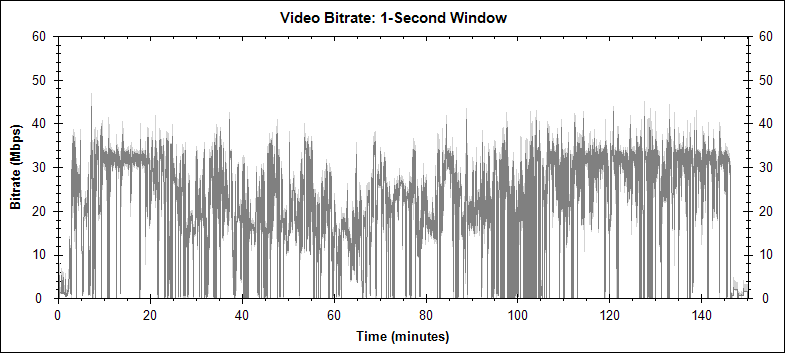
The DVD referenced below was a beautiful restoration drawn from the best available footage. Unfortunately, about 25% of the footage was, at the time it was made (early 2000s) thought to be completely lost. In 2008 a 16mm version of what is thought to be pretty much the whole film was found in Argentina. In the earlier DVD, the missing bits had been described in text plates. Now they could be reinserted. But the 16mm content was a transfer, made in the early 1970s, of a highly degraded nitrate version of the film, so despite their best attempts at restoration, the quality differences are huge. What follows are two frames showing much the same content which were one second apart on this Blu-ray. The first is part of the new reconstruction, taken from the 16mm treasure. The second is the matching part restored from better quality source film. Surprisingly, the transition from one to the other is far less jarring than you might think.
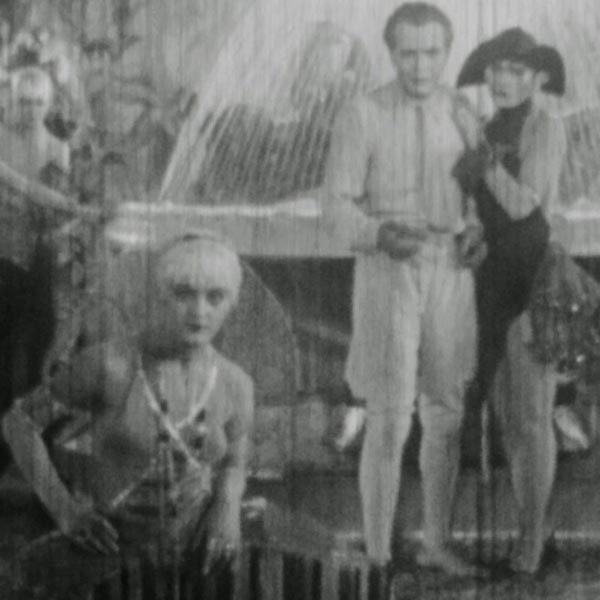
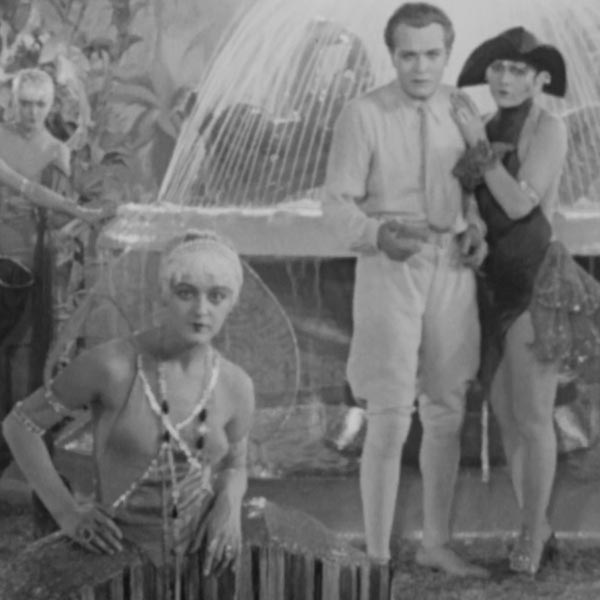
The DVD was the restored version, similar to those offered in the US by Kino (although in the US it was NTSC rather than PAL).
At the top of each comparison is the full frame (suitably shrunk down) used in the comparison, with a 250 pixel wide detail from the frame underneath. The left side is from the PAL DVD. The image was captured digitally from the disc, scaled up from its native 720 by 576 pixel resolution to 768 by 576 (to present in the correct aspect ratio) by the application. I then scaled it, in order for it to be comparable to the Blu-ray version, to 1,440 by 1,080 pixels.
The detail is from that last scaled version, and has not been rescaled again. The right side is from the Australian Blu-ray. This has not been scaled at all. Different applications were used to capture the two frames, so some caution should be exercised in judging colour and brightness.
For visitors from NTSC lands, generally the PAL DVD is just a touch sharper than the NTSC DVD.
Well, you could have blown me down with a feather, as I would like to think I remember my Grandfather saying. If I'd had to guess, I would have said that there was not much difference between the two, but look at this. The Blu-ray is cleaner, with visibly finer detail. Grain hasn't gone, but what looked like grain on the DVD now seems to be compression artefacts:
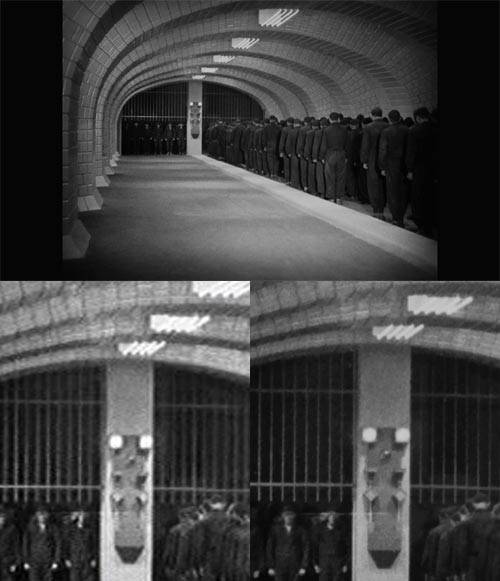
Well, that wasn't a fluke. This frame is similar: the grain is still there but much, much finer. There isn't a lot more detail revealed, but it is delivered more smoothly and naturally than the DVD:
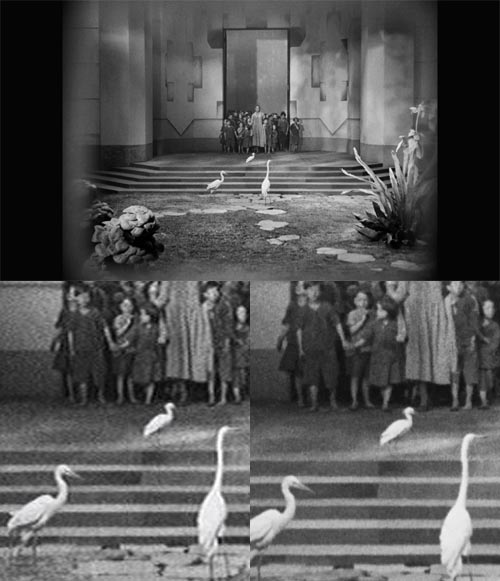
Freed from the course grain, the edges seem sharper, her eyes seem more piercing, her expression very slightly more intent:
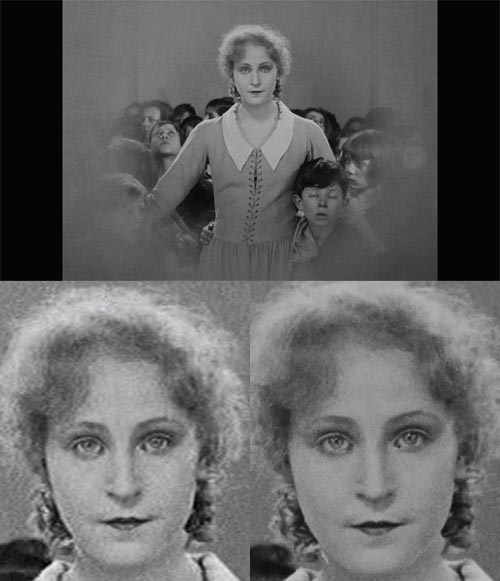

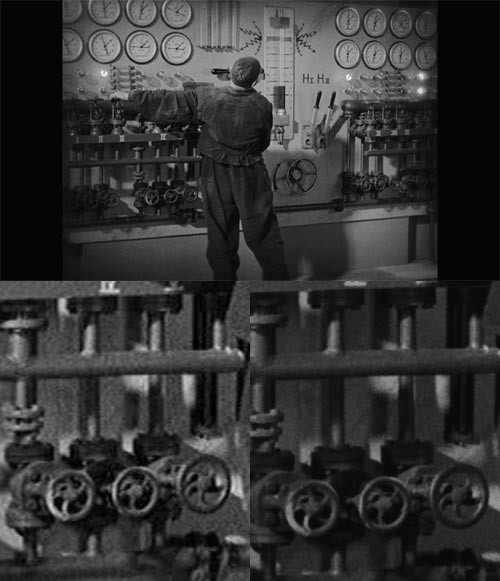
The valves shown above seem smoother and more realistic in the Blu-ray. But I also wanted to look at the dials in the top half of the frame. As we can see, in the Blu-ray the text on their faces is almost readable, and far less so for the DVD version:
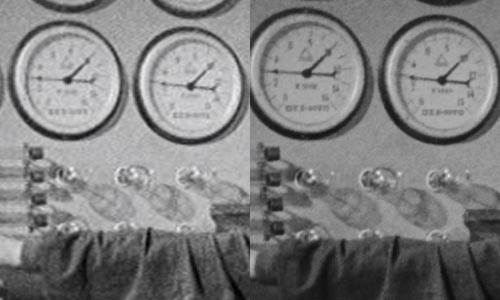
Here, in addition to the Father being cleaner and more precisely defined by the Blu-ray, we can see that the wall behind him has a kind of speckled finish, which is largely washed out in the DVD version:
